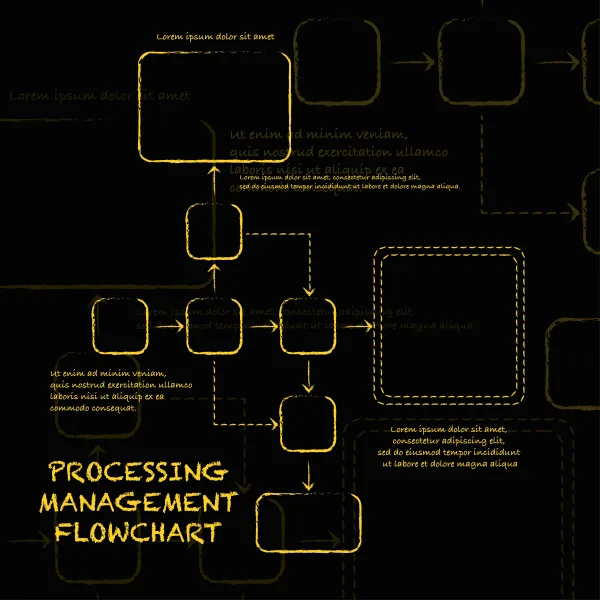Are you ready to dive into the exciting and ever-evolving world of quality assurance testing ? Look no further than the role of a Product Owner – the driving force behind ensuring top-notch product quality . As technology continues to shape our lives, it is imperative for businesses to deliver flawless software solutions that delight their customers . With countless responsibilities on their shoulders, a Product Owner plays a crucial role in leading and collaborating with cross-functional teams to ensure seamless QA testing processes . Join us as we explore the essential duties that make these professionals invaluable assets in any development cycle . Get ready to uncover the secrets behind successful Quality Assurance Testing, as we delve into The Essential Responsibilities of a Product Owner !
Introduction to Quality Assurance Testing and the Role of a Product Owner
Quality assurance testing is an essential process in the development of any product . It aims to ensure that the final product meets the desired quality standards and fulfills all customer requirements . The role of a product owner in this process is crucial, as they are responsible for overseeing and coordinating the entire quality assurance testing phase .
The primary responsibility of a product owner is to represent the customers’ interests and act as their voice throughout the development process . This includes defining and prioritizing customer requirements, conducting market research and ensuring that the final product meets user needs and expectations . In terms of quality assurance testing, this means working closely with the development team to establish clear quality goals and objectives .
As the ultimate decision-maker for the product, the product owner must understand all aspects of quality assurance testing fully . This includes being familiar with different types of testing (such as functional, usability, performance, etc .) and understanding how they fit into the overall development process . They should also have a good understanding of test design techniques and be able to provide valuable feedback on test plans created by their team .
Another critical responsibility of a product owner in quality assurance testing is managing risk . As with any project or process, there are always inherent risks involved in software development . The product owner must identify potential risks early on in the planning phase and take appropriate measures to mitigate them during testing .
In addition to managing risks, communication is vital for successful quality assurance testing . The product owner should keep all stakeholders informed about progress made during each stage of testing . They must effectively communicate any issues or bugs found during testing while keeping everyone updated on resolution efforts .
Furthermore, collaboration is key when it comes to quality assurance testing . A successful product owner works closely with both developers and testers to ensure that all teams are aligned in terms of goals, processes,and expectations for each other’s work .
A strong partnership between the product owner and the quality assurance team is crucial for achieving high-quality products . The product owner plays a vital role in ensuring that the final product meets all customer requirements and is of exceptional quality . Understanding this role and performing it effectively is essential for every product owner involved in quality assurance testing .
Understanding The Responsibilities of a Product Owner in QA Testing
As the bridge between the development team and the stakeholders, a product owner plays a crucial role in quality assurance testing . They are responsible for ensuring that the final product meets the expectations of both the end-users and business objectives . In this section, we will discuss the key responsibilities of a product owner in QA testing and how they contribute to ensuring high-quality software .
- Defining Quality Standards :
A product owner is responsible for defining and setting clear quality standards for the software being developed . This involves understanding user requirements, market trends and business goals to determine what qualifies as a well-performing application . They collaborate with stakeholders to establish these standards early on in the project and ensure they are aligned with their expectations .
- Communicating Clear Requirements :
One of the primary responsibilities of a product owner is to communicate clear requirements to the development team . This includes functional as well as non-functional requirements such as performance, security, usability, etc . Thoroughly communicating these requirements before each sprint enables developers to write code that meets those specifications from start to finish .
- Prioritizing User Stories :
In Agile methodology, user stories serve as a communication tool between business stakeholders and developers . The product owner is responsible for prioritizing user stories based on their importance in achieving overall quality objectives while catering to stakeholder needs . By doing so, they ensure that critical functionalities are tested thoroughly before moving onto less important ones .
- Utilizing Feedback :
Feedback loops play an essential role in QA testing processes . A good product owner actively seeks feedback from various sources like end-users or stakeholders during different stages of development to identify potential issues early on and make timely corrections .
- Coordinating With QA Team :
Product owners work closely with quality assurance teams throughout all stages of software development; assisting them with test scenario creation, test case execution reviews, defect triage meetings among other activities – constantly collaborating to reduce defects count through communication tracking expertise – allowing efficient & effective defect resolution .
- Ensuring Acceptance Criteria :
Along with defining clear requirements, the product owner is also responsible for setting acceptance criteria for each user story . This helps in determining whether a user story is complete and meets the defined standards . By having strict acceptance criteria, they ensure that the final product delivered to stakeholders meets their expectations and is of high quality .
A product owner has a multi-faceted role in quality assurance testing . Beyond just defining requirements and prioritizing tasks, they actively contribute to ensuring that the final software meets set quality standards and achieves overall business objectives . They play an essential role in fostering communication between all parties involved, leading to effective collaboration and high-quality software delivery .
What Are The Key Differences Between Product Management and Product Ownership ?
As a product owner, understanding the difference between product management and product ownership is crucial for your success in quality assurance testing . While these two roles may seem similar, they have distinct responsibilities that should not be overlooked .
Product management is primarily concerned with the overall strategy and vision for a product . This includes conducting market research, identifying customer needs, setting product goals and managing the development process . Product managers work closely with cross-functional teams to ensure that the final product meets customer requirements and aligns with business objectives .
On the other hand, product ownership focuses on the day-to-day operations of a specific product . This role involves creating and prioritizing user stories and ensuring their timely delivery by working closely with development teams . Product owners are also responsible for defining acceptance criteria, conducting acceptance testing and making critical decisions to keep projects on track .
One of the key differences between these two roles lies in their scope of responsibility . While a product manager oversees multiple products or features within a larger portfolio, a product owner is solely accountable for one specific product or feature at a time .
Another significant difference is that while both roles involve working closely with various stakeholders such as customers, developers and business teams, their focus may vary . As mentioned earlier, a product manager has a broader strategic focus on market trends and competitor analysis to meet customer demand . In comparison, a product owner works more directly with developers to ensure timely delivery of high-quality products that meet user needs .
In terms of daily tasks, both roles require excellent communication skills but differ in their approach . A successful product manager must communicate effectively with all stakeholders to foster collaboration throughout the development cycle . A good understanding of market trends and customer feedback is also necessary for this role to prioritize features accordingly .
A successful product owner must excel in managing expectations among different stakeholders while actively collaborating with cross-functional teams to deliver high-quality products within set timelines . They must have an in-depth understanding of agile methodologies such as Scrum and Kanban to work effectively with development teams .
While product management and product ownership have similar end goals of delivering successful products, they require different skill sets and priorities . As a product owner in quality assurance testing, it is vital to understand these key differences to excel in your role and contribute effectively towards the success of the project .
What Is The Importance of Clear Communication for a Product Owner ?
Effective communication is the cornerstone of any successful product . As a product owner, it is essential to have clear and concise communication with all stakeholders involved in the quality assurance testing process . This responsibility encompasses not only articulating the requirements and goals of the product but also providing timely feedback, addressing issues and conveying progress updates .
One of the primary reasons why clear communication is crucial for a product owner is that it ensures everyone is on the same page regarding the vision and objectives of the product . In defining clear expectations, potential misunderstandings can be avoided, leading to smoother collaboration among team members . This allows for better decision-making and problem-solving throughout the development process .
Furthermore, effective communication also promotes transparency and accountability within the team . As a product owner, it is your responsibility to communicate project progress, milestones achieved and potential roadblocks that may arise . By doing so, you create an environment where every member feels accountable for their tasks and understands how their work contributes to achieving overall project success .
In addition to fostering teamwork and productivity, clear communication also plays a vital role in managing stakeholder expectations . Whether it’s developers or clients, stakeholders are invested in seeing the final product meet their needs and exceed their expectations . Regularly communicating with them helps manage their expectations while giving them peace of mind that they are updated on project progress .
Another aspect of effective communication for a product owner is providing constructive feedback during quality assurance testing . Quality assurance testers rely on feedback from product owners about identified bugs or issues to improve upon their work continually . Therefore, communicating detailed information about bugs or defects found in testing not only helps improve overall test results but also builds trust between team members .
Last but not least, clear communication serves as a way to address issues promptly when they arise during quality assurance testing . Delayed response times can lead to missed deadlines or compromised product quality . As such, maintaining constant open lines of communication between all parties helps resolve problems before they escalate, ensuring the project stays on track .
Effective communication is crucial for a product owner in quality assurance testing . It not only promotes teamwork and productivity but also fosters transparency, accountability and stakeholder satisfaction . As a product owner, it is imperative to prioritize clear communication at all stages of the development process to ensure the success of your product .
What Skills and Qualifications are Required to be a Successful Product Owner in QA Testing ?
Quality Assurance (QA) testing is a crucial aspect of product development, ensuring that the final product meets its intended purpose and delivers a seamless user experience . In this dynamic and ever-evolving field, the role of a Product Owner takes on significant importance . A successful Product Owner in QA testing must possess a diverse set of skills and qualifications to effectively navigate the challenges and responsibilities associated with this position .
Firstly, a strong understanding of industry knowledge and technical expertise is essential for a Product Owner in QA testing . They must have an in-depth knowledge of software development methodologies such as Agile or Scrum, as well as relevant tools and technologies used in the process . This not only allows them to make informed decisions but also enables effective communication with team members from different backgrounds .
Along with technical proficiency, the ability to manage project timelines, priorities and resources is crucial for success in this role . A Product Owner should have excellent organizational skills to ensure that projects are delivered within deadlines while maintaining high-quality standards . They must be able to prioritize tasks based on their criticality and make quick decisions when faced with unexpected challenges .
Adept problem-solving skills are necessary to identify potential risks and quickly devise solutions to mitigate them before they impact project delivery . The Product Owner must also possess strong analytical abilities to evaluate complex information gathered during testing processes accurately . This data-driven approach helps them make evidence-based decisions regarding product quality improvement .
Team management is another critical skill required for being an efficient Product Owner in QA testing . They must be able to inspire team members towards a common goal by providing clear direction and constructive feedback while fostering collaboration among all stakeholders involved in the project .
Besides these essential skills, certain qualifications can give candidates an added advantage when seeking roles as a Product Owner in QA testing . For instance, certifications such as Certified Scrum Product Owner (CSPO), ISTQB Foundation Level Certification or Six Sigma Quality Assurance can demonstrate their commitment towards continuous learning, professional growth and validate their proficiency in QA testing .
Being a successful Product Owner in QA testing requires a unique combination of technical expertise, project management skills, problem-solving abilities, team management capabilities and relevant qualifications . Possessing these skills and qualifications will not only make them an asset to the organization but also empower them to drive positive change and deliver high-quality products that meet customer expectations .
What Are The Challenges Faced by Product Owners in QA Testing and How to Overcome Them ?
Product Owners play a crucial role in Quality Assurance (QA) testing, as they are responsible for ensuring that the product meets the expectations and requirements of the stakeholders . However, being a Product Owner in QA testing comes with its own set of challenges that can hinder the smooth and efficient functioning of the process . In this section, we will discuss the top challenges faced by Product Owners in QA testing and how to overcome them .
- Lack of Communication :
One of the biggest challenges faced by Product Owners is a lack of communication between themselves, development teams and testers . This can lead to misunderstandings, delays and ultimately impact the quality of the product . To overcome this challenge, it is important for Product Owners to establish clear communication channels with all stakeholders involved in the QA testing process . Regular meetings, status updates and progress reports can help bridge any gaps in communication .
- Managing Stakeholder Expectations :
As a Product Owner in QA testing, it is your responsibility to ensure that all stakeholders have a clear understanding of what can be expected from the product at each stage . However, managing stakeholder expectations can be challenging as their demands may not always align with what is technically feasible or within budget constraints . To overcome this challenge, effective prioritization techniques like MoSCoW (Must have- Should have-Could have-Won’t have) or Kano model (Satisfier-Dissatisfier) can help determine which features are crucial for successful implementation .
- Unrealistic Deadlines :
Another common challenge faced by Product Owners is unrealistic deadlines imposed by stakeholders or management without considering resources or technical complexities involved . To avoid unnecessary pressure on development teams and maintain quality assurance standards, it’s essential for Product Owners to conduct thorough planning sessions while setting project timelines .
- Testing Environment Limitations :
The success of QA testing greatly depends on having an accurate representation of real-world usage scenarios in terms of data inputs and environment variables . However, creating such an environment can be a complex and time-consuming process, especially with tight deadlines . To overcome this challenge, Product Owners should collaborate with testers and ensure that all requirements are gathered beforehand to create an efficient testing environment .
- Resistance to Change :
In most organizations, change is met with resistance from team members who are comfortable with the existing processes or tools . As a Product Owner in QA testing, it’s important to address any resistance positively and provide training or support needed to adapt to changes for better quality assurance outcomes .
Being a successful Product Owner in QA testing requires effective communication skills, stakeholder management abilities, realistic planning techniques, proactive approach towards challenges and adapting to changes quickly . Overcoming these challenges will not only lead to better product quality but also help develop strong cross-functional relationships within the organization .
What Are Salary Expectations For Product Owners in QA Testing ?
Product owners play a crucial role in quality assurance testing, as they are responsible for defining and prioritizing requirements, collaborating with the development team and ensuring that the end product meets the desired quality standards . As such, it is important to understand what salary expectations can be for product owners in QA testing .
The salary expectations for product owners in QA testing can vary based on several factors, including their experience level, industry, location and company size . According to Glassdoor’s data, the average salary for a product owner in the United States is around $100K per year . However, this can range anywhere from $75K to $130K depending on various factors .
Experience level has a significant impact on a product owner’s salary . Generally, individuals with more experience (5+ years) can expect a higher salary compared to entry-level professionals . This is because experienced product owners have likely acquired extensive knowledge and skills that make them valuable assets to organizations .
Industry also plays an essential role in determining a product owner’s salary expectations . For instance, those working in software or technology companies may earn higher salaries compared to those in industries like healthcare or finance . This is due to the demand for specialized skills and the competitive nature of these industries .
Location also has an impact on salaries for product owners in QA testing . Cities with high costs of living typically offer higher salaries compared to smaller cities or rural areas . For example, San Francisco and New York City are known for offering some of the highest salaries for product owners due to their booming tech industries .
Company size can also affect compensation for product owners in QA testing . Generally speaking, larger companies tend to have bigger budgets and could potentially offer higher salaries compared to smaller startups or medium-sized organizations .
In addition to these factors, it is important to note that certifications such as Certified Scrum Product Owner (CSPO) or Agile Certified Product Manager (ACPM) can also influence salary expectations positively . These certifications showcase a product owner’s skills and expertise, making them more competitive in the job market .
Salaries for product owners in QA testing can vary widely depending on experience, industry, location and company size . It is always recommended to research and negotiate salary expectations based on these factors to ensure fair compensation for this critical role in quality assurance testing .
What Questions Are Typically Asked During a Product Owner Job Interview And What Answers Can Be Given ?
Hiring a Product Owner for your Quality Assurance team is an important decision that requires careful consideration . Therefore, during a job interview, it’s crucial to ask the right questions to assess the candidate’s skills, experience and suitability for the role .
Here are some typical questions that are asked during a Product Owner job interview :
- What motivated you to become a Product Owner ?
This question allows the candidate to demonstrate their passion and interest in product ownership . The answer can provide insights into their values and goals, which should align with the company’s objectives .
- What do you see as your primary responsibilities as a Product Owner in the quality assurance process ?
Through this question, you can determine if the candidate understands what’s expected of them in this role . Look for answers that include managing stakeholders, defining product vision and priorities, communicating with development teams and ensuring QA standards are met .
- How do you prioritize features and tasks in Agile development ?
As Agile methodology is commonly used in Quality Assurance testing, it’s essential to assess whether candidates have experience working within this framework . The answer should mention factors such as business value, customer needs and technical feasibility when prioritizing features .
- Can you give an example of how you handled conflicts between stakeholders while defining project scope ?
The Product Owner must balance different viewpoints and conflicting interests from various stakeholders while defining project requirements . This scenario-based question helps evaluate their conflict resolution skills through real-life examples .
- How do you ensure communication runs smoothly between development teams and stakeholders ?
A critical responsibility of a Product Owner is effective communication between all parties involved in product delivery . Look for answers that highlight regular stand-up meetings, using appropriate tools such as backlog management software and fostering open communication channels .
- Can you describe your experience with user acceptance testing (UAT) ?
UAT plays an essential role in determining whether products meet customer expectations before release . It’s important to verify that candidates understand UAT and can oversee its successful execution .
- How do you handle changing priorities or unexpected changes during project development ?
Product Owners must be adaptable to unpredictable situations while still ensuring the product meets quality standards . Look for answers that showcase their flexibility and ability to prioritize tasks effectively .
Remember, it’s not just about asking the right questions but also listening carefully to the candidate’s answers . The ideal Product Owner should have a good understanding of Agile Methodology, exceptional communication skills and strong leadership abilities – all vital qualities in ensuring efficient Quality Assurance testing practices .
Conclusion : The Crucial Role of a Product Owner in Quality Assurance Testing
It is evident that the role of a Product Owner in Quality Assurance (QA) testing is crucial for the success of a product . A Product Owner holds the responsibility of ensuring that the end-product meets the desired quality and fulfills all customer requirements . This requires effective communication, collaboration and decision-making skills .
One of the key responsibilities of a Product Owner in QA testing is to define clear and specific acceptance criteria for each feature or user story . These criteria outline what needs to be tested and provide guidance for QA testers to verify if the expected functionality has been delivered . This helps prevent misunderstandings and delays in development, as well as ensures that the product meets customers’ expectations .
Furthermore, a Product Owner plays a critical role in prioritizing tasks during QA testing . They must understand business needs and priorities to determine which features need immediate attention and which ones can wait until later releases . This requires constant collaboration with stakeholders, including developers and QA testers, to ensure that all parties are aligned on project goals .
Moreover, a Product Owner serves as the main point of contact between stakeholders and the development team during QA testing . They act as a bridge between business demands and technical limitations, ensuring that all parties have a shared understanding of project requirements . This necessitates excellent communication skills to convey complex technical information in simple terms to non-technical stakeholders .
Additionally, it is imperative for a Product Owner to closely monitor progress during QA testing and make timely decisions on any defects found by testers . They must weigh the cost-benefit analysis when determining whether it is necessary to fix an issue immediately or wait until future releases .
In essence, being an effective Product Owner in QA testing requires striking a balance between technical expertise, business acumen, communication skills and decision-making ability . By taking on these essential responsibilities with dedication and diligence, Product Owners can significantly contribute towards delivering a high-quality product that meets the needs of customers and stakeholders .
It is vital for organizations to recognize the crucial role of a Product Owner in QA testing . By empowering them with the necessary tools and support, businesses can ensure that their products are of top-notch quality, meeting customer expectations and driving success in the market .












